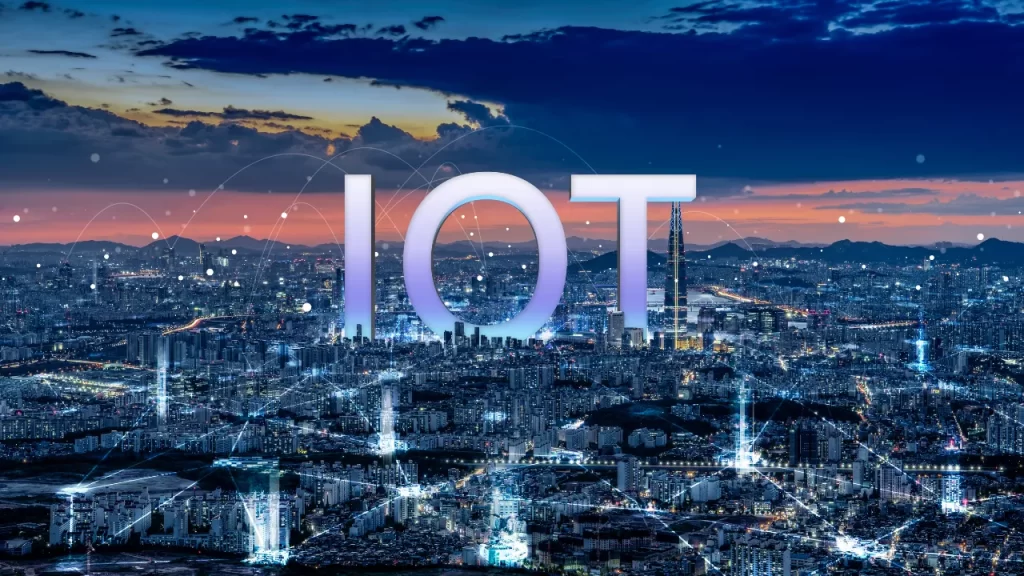The Internet of Things (IoT) is revolutionizing asset management across industries by enabling real-time tracking, predictive maintenance, and data-driven decision-making.
For businesses that rely heavily on fixed assets—such as machinery, equipment, or buildings—IoT offers unprecedented visibility and control over these valuable resources.
From tracking location to monitoring asset health, IoT technology is reshaping fixed asset management, making it more efficient, proactive, and cost-effective.
In this post, we’ll explore the benefits of IoT in fixed asset management, key applications, implementation challenges, and best practices to maximize its impact.
Understanding IoT in the Context of Fixed Asset Management
a. Defining IoT
IoT, or the Internet of Things, refers to a network of interconnected devices that collect, transmit, and analyze data over the internet in real time.
These devices, equipped with sensors and software, allow businesses to monitor and manage assets remotely.
b. What Are Fixed Assets?
Fixed assets are long-term resources, such as machinery, vehicles, buildings, and equipment, that are used in operations and contribute to the business’s productivity and value.
Effective fixed asset management is crucial for tracking the health, location, and lifecycle of these assets.
c. Role of IoT in Fixed Asset Management
IoT transforms fixed asset management by providing real-time insights into asset location, usage, condition, and performance.
With IoT, businesses can enhance asset visibility, streamline maintenance, and make data-driven decisions to improve efficiency and asset utilization.
Key Benefits of IoT in Fixed Asset Management
a. Real-Time Asset Tracking and Visibility
IoT enables continuous monitoring of asset location and status, providing organizations with real-time visibility across all assets.
This transparency prevents asset loss, optimizes utilization, and improves inventory management.
b. Predictive and Preventive Maintenance
IoT sensors monitor asset conditions (e.g., temperature, vibration, wear) to detect signs of potential failure before they escalate.
Predictive maintenance reduces unplanned downtime, extends asset lifespan, and lowers maintenance costs by identifying issues early.
c. Enhanced Asset Utilization and Efficiency
IoT provides data on asset usage patterns, helping organizations optimize allocation and reduce idle time.
By maximizing asset utilization, businesses can achieve higher returns on investment and improve overall productivity.
d. Data-Driven Decision Making
IoT enables asset managers to make informed decisions regarding asset acquisition, maintenance, and retirement.
With data on performance, usage, and lifecycle, managers can optimize budgets, plan for replacements, and improve overall asset management strategy.
e. Improved Compliance and Audit Readiness
IoT technology streamlines asset tracking, automates record-keeping, and helps businesses comply with regulations.
Automated data collection and storage ensure that asset information is accurate and accessible, making audits easier and faster.
Applications of IoT in Fixed Asset Management
a. Asset Location and Inventory Management
IoT devices, such as GPS trackers and RFID tags, track asset location, movement, and usage in real time.
This tracking prevents asset loss, improves inventory accuracy, and simplifies audits by ensuring assets are available when needed.
Example: A retail business can track the location of display equipment across stores, preventing loss and enabling efficient inventory audits.
b. Predictive Maintenance and Condition Monitoring
IoT sensors monitor critical factors like temperature, pressure, and vibration, helping maintenance teams anticipate issues before they cause asset failure.
Real-time alerts allow for timely interventions, reducing breakdowns and associated repair costs.
c. Energy Management and Cost Optimization
IoT monitors energy consumption of fixed assets, identifying energy inefficiencies and enabling cost-saving measures.
These insights allow organizations to reduce waste, lower utility expenses, and support sustainability initiatives.
d. Lifecycle Management and Depreciation Tracking
IoT data provides insights into asset performance and lifespan, helping organizations track depreciation and schedule timely replacements.
With lifecycle insights, managers can plan budgets and extend asset longevity.
e. Compliance and Regulatory Reporting
IoT automates record-keeping and ensures accurate documentation, supporting compliance with regulatory requirements. By maintaining an accurate audit trail, IoT simplifies regulatory audits and enhances accountability
Challenges of Implementing IoT in Fixed Asset Management
a. Data Security and Privacy Concerns
IoT networks generate a large volume of data, making them vulnerable to cybersecurity threats.
Unauthorized access or data breaches can lead to significant losses and reputational damage.
Solution: Implement strong data encryption, device authentication, and secure network protocols to protect data integrity and privacy.
b. High Initial Investment and Maintenance Costs
IoT deployment requires significant upfront investment for devices, software, and infrastructure. Maintenance and operational costs can also add up over time.
Solution: Start with a pilot project to test ROI and manage costs. As you expand IoT, assess long-term benefits against initial investments to ensure profitability.
c. Integration with Existing Systems
Integrating IoT with legacy asset management systems can be challenging, particularly if those systems aren’t designed to support new technologies.
Solution: Use middleware or APIs to connect IoT devices with existing systems, facilitating data sharing without a complete overhaul.
d. Data Overload and Management
IoT generates massive amounts of data, making it challenging to process and analyze effectively. Data overload can lead to inefficiency and hinder decision-making.
Solution: Implement data management tools to filter, store, and analyze data. Focus on key metrics to prevent data overwhelm and enable actionable insights.
e. Skill Gaps and Training Needs
Implementing and managing IoT solutions requires specialized skills, which may be lacking in some organizations. Skill gaps can delay adoption and limit IoT effectiveness.
Solution: Invest in employee training or hire IoT specialists to manage technical aspects and interpret data, ensuring optimal IoT implementation.
Best Practices for Implementing IoT in Fixed Asset Management
- Start with a Pilot Program: Begin with a small-scale IoT implementation to assess ROI, identify challenges, and refine processes before a full rollout.
- Prioritize Data Security and Compliance: Secure IoT networks and comply with relevant data privacy regulations to protect against cyber threats and maintain regulatory compliance.
- Select Scalable Solutions: Choose IoT solutions that can scale with your organization’s needs, allowing for future growth and flexibility.
- Integrate Analytics for Informed Decision-Making: Use analytics tools to interpret IoT data, enabling data-driven decisions that improve asset management and optimize performance.
- Provide Training and Upskill Staff: Equip your team with the skills needed to manage IoT solutions and interpret data insights, ensuring effective use of IoT technology.
Conclusion
IoT is reshaping fixed asset management by providing real-time tracking, predictive maintenance, and valuable data insights.
While IoT offers many advantages, successful implementation requires careful consideration of challenges like data security, integration, and costs.
By following best practices, businesses can harness IoT to improve asset visibility, extend asset life, and enhance operational efficiency.





